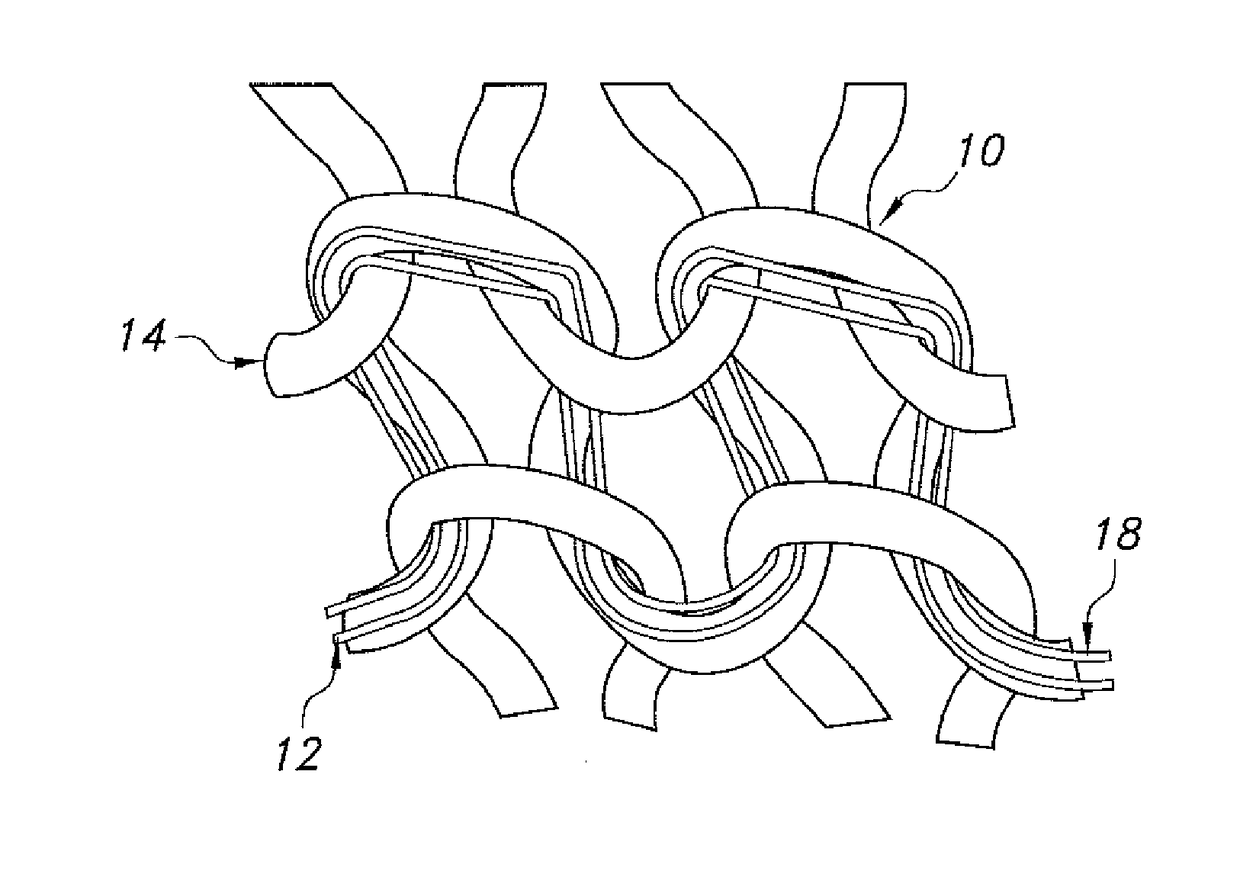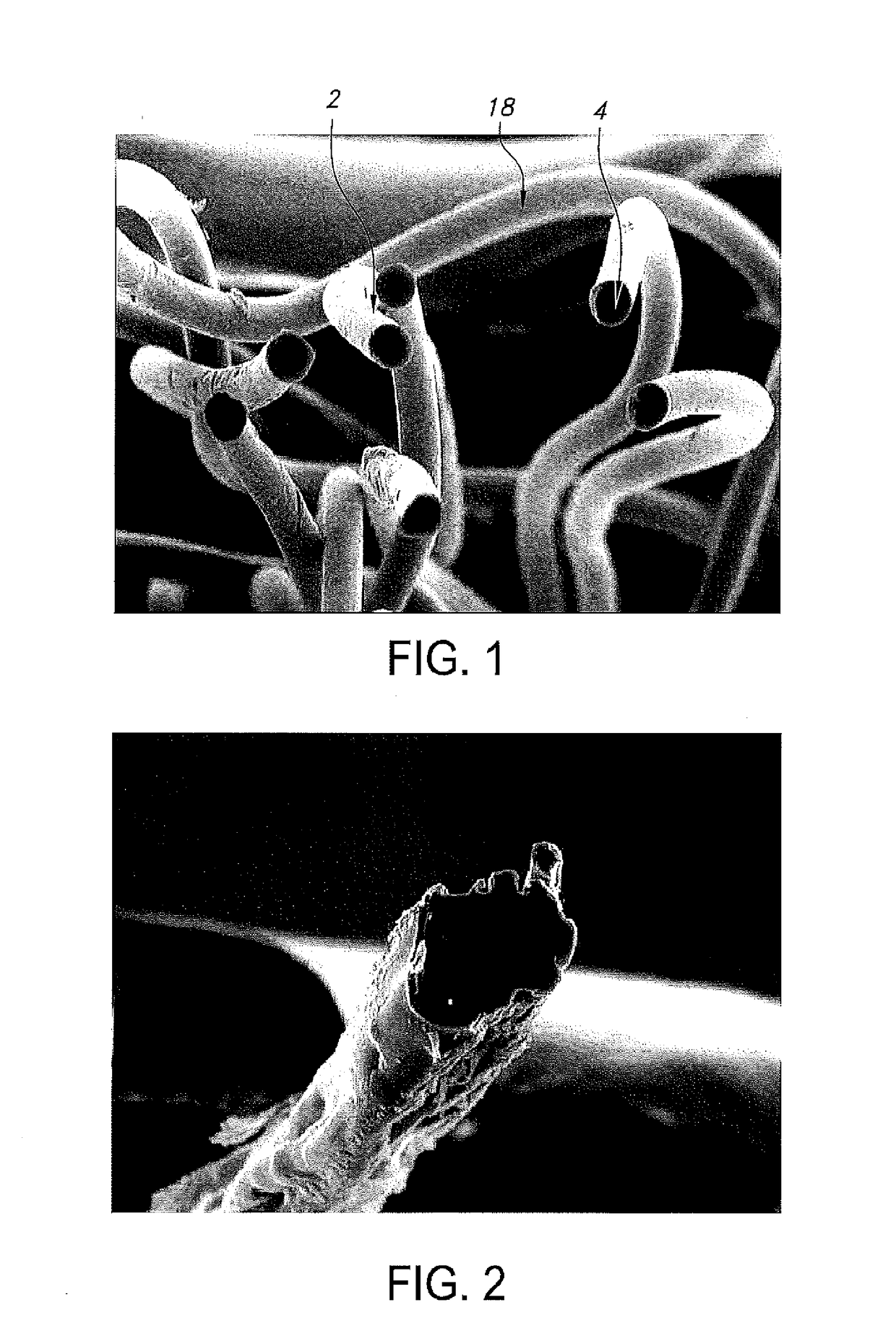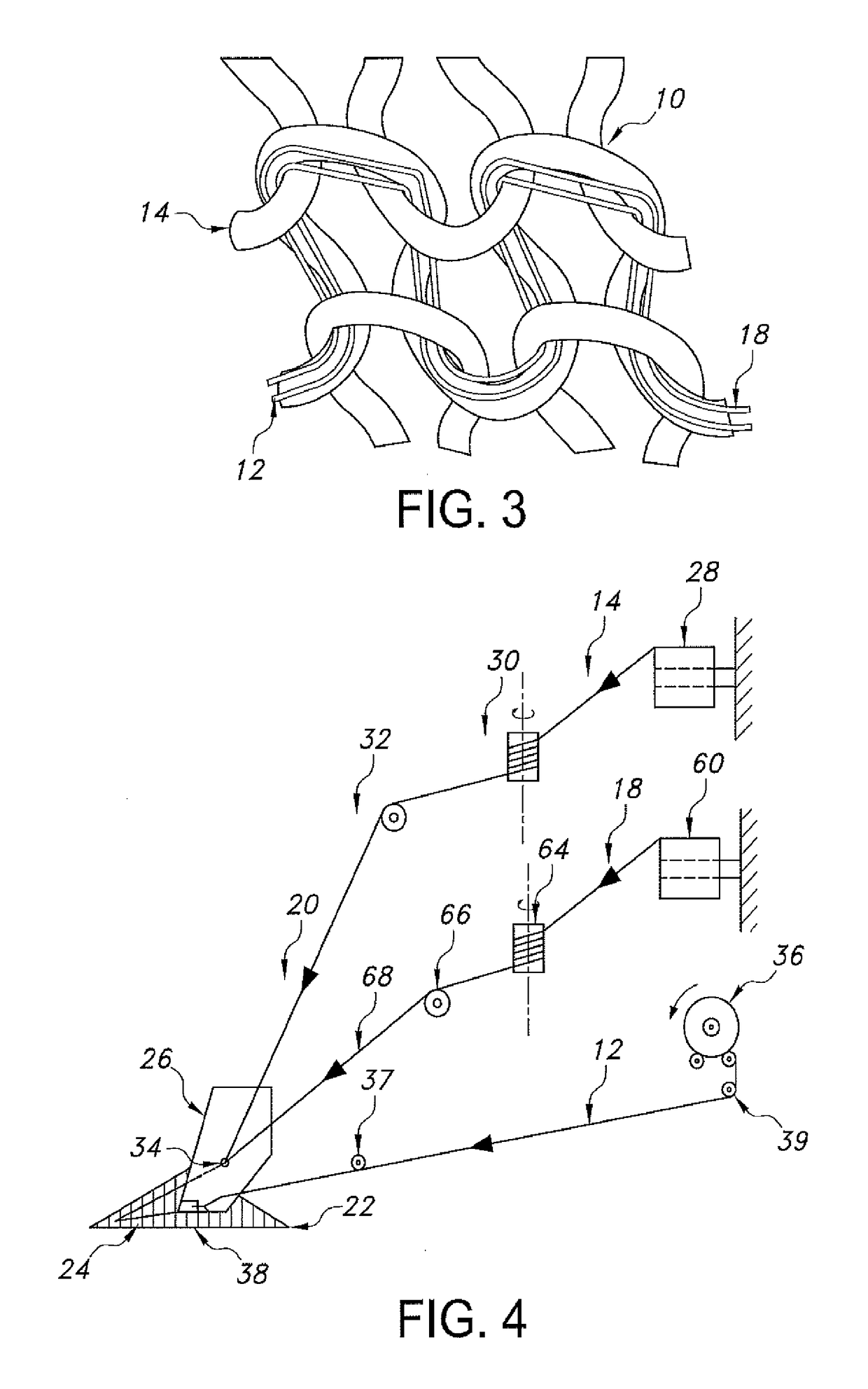Easily settable stretch fabrics including low-melt fiber
- Summary
- Abstract
- Description
- Claims
- Application Information
AI Technical Summary
Benefits of technology
Problems solved by technology
Method used
Image
Examples
example 1
[0132]Low melting fiber LOMELA™, manufactured by HUVIS Company, is used for making the composition yarn and fabrics. LOMELA™ is low melting bi-component filaments with core and sheath structure. The sheath is a low melting polymer and core is regular polyester fiber. During thermal activating processing, the fiber can easily develop bonding function where a stable form is required. The yarn is 75 denier with 36 filaments. The melting temperature is 165° C. for sheath component part. When the heat temperatures lower than 150° C., the fiber looks and behaves as regular polyester fiber. When the temperature reach 150° C. or higher, the low melting sheath start to soft and melt. When the temperature reach 165° C., the sheath portion is totally melt and fused with core fiber. The individual 36 filaments are melt and bound together to form a single thread bundle. It also connect and bond with neighbor rigid fiber and elastic yarn to form a cross linking structu...
example 2
Fiber: Mono-Component Fiber
[0133]A mono-component fiber comprising “polyolefin” polymer is used as low melting fiber. The fiber is spun into 40D with one filament. The fiber starts to melt at 135.65° C. and reach to melting peak at 146.26° C. The thermal activating process can be conducted in the temperature range of from about 120° C. a period of 5 seconds to several minutes. After melting, it bonds with neighbor rigid fiber and elastic fiber to form a cross linking structure within the fabric.
example 3
vered Yarn
[0134]75D / 36f low-melting bi-component yarn is wrapped around a core of 40D LYCRA® fiber. The LYCRA® fiber is stretch out at 3.0× during covering. The yarn has high recovery and shiny aesthetic on surface due to low-melting bi-component fiber. This covered yarn can be used for hosiery, pantyhose, socks and knit and woven applications.
PUM
| Property | Measurement | Unit |
|---|---|---|
| Temperature | aaaaa | aaaaa |
| Temperature | aaaaa | aaaaa |
| Temperature | aaaaa | aaaaa |
Abstract
Description
Claims
Application Information
 Login to View More
Login to View More - R&D
- Intellectual Property
- Life Sciences
- Materials
- Tech Scout
- Unparalleled Data Quality
- Higher Quality Content
- 60% Fewer Hallucinations
Browse by: Latest US Patents, China's latest patents, Technical Efficacy Thesaurus, Application Domain, Technology Topic, Popular Technical Reports.
© 2025 PatSnap. All rights reserved.Legal|Privacy policy|Modern Slavery Act Transparency Statement|Sitemap|About US| Contact US: help@patsnap.com



